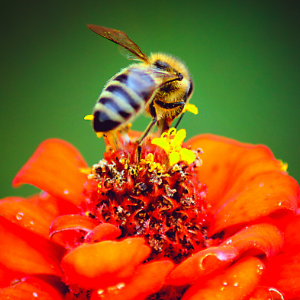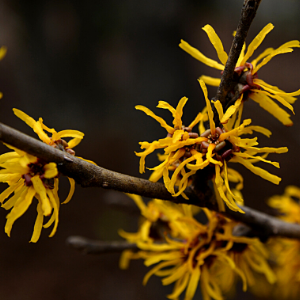Are honeybees endangered? Is Colony Collapse Disorder (CCD) still a thing? What is even going on?
 Honeybees are non-native pollinators critically important for our food supply. They were imported by European settlers in the 17th century for that very reason. CCD, or the sudden loss of nearly all workers in a hive, caused significant concern in the late 2000’s. Entomologists studying bee health still have not fully put their fingers upon a predictable pattern of causes – but pests, viral and bacterial infections, and toxic chemical exposure are all thought to play a role. In addition, lack of resources (or competition for scarce resources with native bees) can add to the problem.
Honeybees are non-native pollinators critically important for our food supply. They were imported by European settlers in the 17th century for that very reason. CCD, or the sudden loss of nearly all workers in a hive, caused significant concern in the late 2000’s. Entomologists studying bee health still have not fully put their fingers upon a predictable pattern of causes – but pests, viral and bacterial infections, and toxic chemical exposure are all thought to play a role. In addition, lack of resources (or competition for scarce resources with native bees) can add to the problem.
Today, CCD is still around, but thankfully its devastating impact on bee colonies has diminished. However, honeybee hives, and native bees, still struggle with the stresses put on their population. So what can we do to help? Here are a few ways you can help our “sweet” friends this National Honey Bee Day!
- Plan for flowers in all seasons! Bees can be active as early as March, if temperatures allow, and early blooms help sustain their population. Some favorite early blooms of the Akron Zoo horticulture team are:
- Crocus species
- Hellebores, or Lenten roses
- Violets, especially the native species
- Snowdrops
- Native redbud trees
- Native flowering dogwood
- Native tulip poplar
- Think they’re thirsty? Set up a bee bath in your yard or patio. Bees work hard during the summer and will appreciate a space to rest and cool off. You can watch honeybees as well as other native bee species, like mason or leaf-cutter bees. Fun fact, native bees like the mason or leaf-cutter bees are solitary and rarely sting. Mason beekeepers don’t even wear bee suits!
 Keep it up for the home stretch! Bees also need food in the fall months. Install late-flowering plants, like:
Keep it up for the home stretch! Bees also need food in the fall months. Install late-flowering plants, like:
- Native goldenrod (It doesn’t cause allergies, we promise! That’s its lookalike, ragweed.)
- Native stonecrop
- Native ironweeds
- Native joe-pye weed
- Native witch-hazel
- Leave your cleanup for spring! Old leaves, stems, and other detritus can be a snuggly bed for native bees to hibernate.
- Zoo horticulturists leave a large chunk of bed cleanup for mid- to late spring. In addition to making cleanup easier, this allows for our invertebrate friends – including bees – to have a place to stay the winter.
- Carefully read the labels of any chemicals used in or around your garden. Avoid using insecticides. Call a licensed professional to discuss chemical-free options.
- Support local, sustainable beekeeping.
